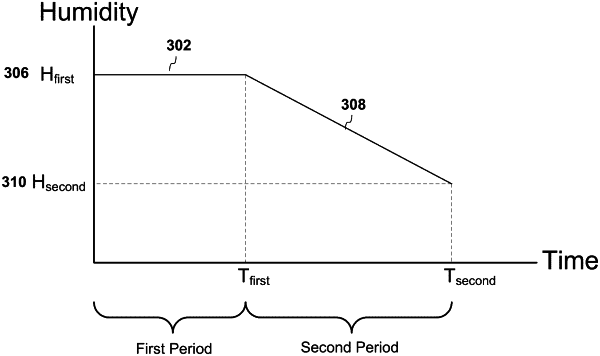| CPC B28B 11/247 (2013.01) [C04B 35/64 (2013.01); C04B 2235/616 (2013.01); C04B 2235/65 (2013.01)] | 11 Claims |

|
1. A method of reducing dry crack formation in a ceramic matrix composite, the method comprising:
exposing an outer surface of a green body to a gaseous atmosphere having a first humidity for a first period of time at room temperature, the green body being a slurry-infiltrated ceramic fiber preform comprising a plurality of fiber plies or a plurality of prepreg tape layers comprising fibers, the first humidity being a relative humidity within a range of about 40 percent to 100 percent, the first period of time being within a range of about six hours to about 12 hours; and
reducing the humidity of the gaseous atmosphere, while the outer surface of the green body is exposed to the gaseous atmosphere at room temperature, from the first humidity to a second humidity over a second period of time, the second humidity being a relative humidity within a range of about 50 percent to about 65 percent or within a range of about 45 percent to about 60 percent, the second period of time being within a range of about 12 hours to about 18 hours.
|